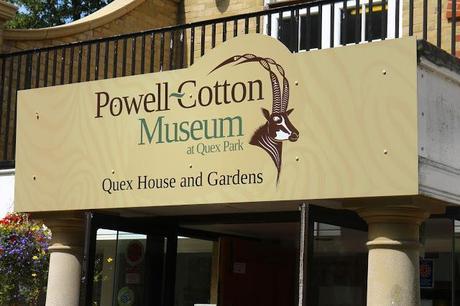 Quex Park is a museum, house and gardens, craft fair, falconry, paintball range, farmers market and much much more. This time we limited ourselves to the house, gardens and Powell-Cotton museum (which wasn't about the history of cotton as I stupidly assumed originally but actually specimens from Africa that the Powell-Cotton family had collected and preserved.
Quex Park is a museum, house and gardens, craft fair, falconry, paintball range, farmers market and much much more. This time we limited ourselves to the house, gardens and Powell-Cotton museum (which wasn't about the history of cotton as I stupidly assumed originally but actually specimens from Africa that the Powell-Cotton family had collected and preserved.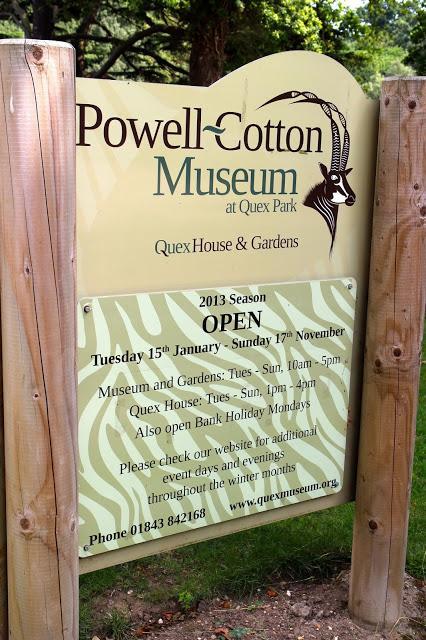 Facepalm moment.
Facepalm moment. Quex is located in Birchington near to Margate and despite being so close to such a bustling town the estate itself is quiet, secluded and really peaceful. You can bring picnics and just enjoy the gardens or pay for a pass to see everything. An adult entry to the house, museum and gardens is just £7 which I thought was brilliant value considering what you are getting.
The Powell-Cotton Museum at Quex Park was established in 1896 by Major Percy Horace Gordon Powell-Cotton (1866-1940) to house natural history specimens and cultural objects collected on expeditions to Asia and Africa.
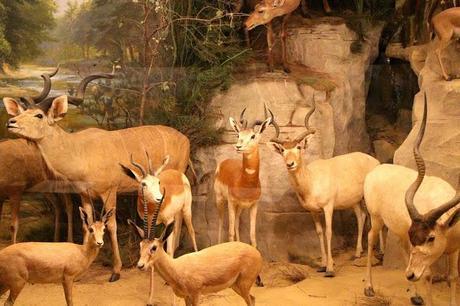 Now I must admit Steve and I were a little taken aback by the museum. I knew that there would be stuffed animals that had been hunted and bought back for study. What I hadn't banked on was the sheer quantity of dead animals.
Now I must admit Steve and I were a little taken aback by the museum. I knew that there would be stuffed animals that had been hunted and bought back for study. What I hadn't banked on was the sheer quantity of dead animals.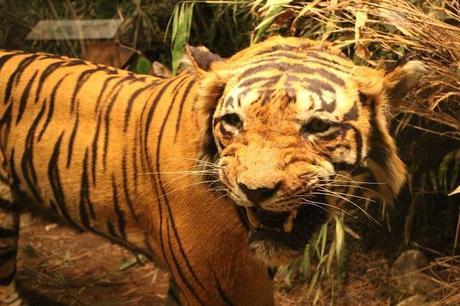 If I am honest we both found it a little disturbing and were trying really hard not to judge the hunters on modern ethics and codes rather than the attitudes of their times. When you are faced with a scene like this though it is really difficult.
If I am honest we both found it a little disturbing and were trying really hard not to judge the hunters on modern ethics and codes rather than the attitudes of their times. When you are faced with a scene like this though it is really difficult.  There are about 11 galleries, a number of which are Dioramas. Dioramas are displays used to showcase mounted mammals in their 'natural' habitat. Major Powell-Cotton established the ones at Quex in around 1896. They are unique to the UK and they are enormous. I can't really describe just how big they are. One had a fully grown bull elephant in it standing in one small corner. If I was standing next to him my 5"3 height would probably have reached the bottom of his ear.
There are about 11 galleries, a number of which are Dioramas. Dioramas are displays used to showcase mounted mammals in their 'natural' habitat. Major Powell-Cotton established the ones at Quex in around 1896. They are unique to the UK and they are enormous. I can't really describe just how big they are. One had a fully grown bull elephant in it standing in one small corner. If I was standing next to him my 5"3 height would probably have reached the bottom of his ear.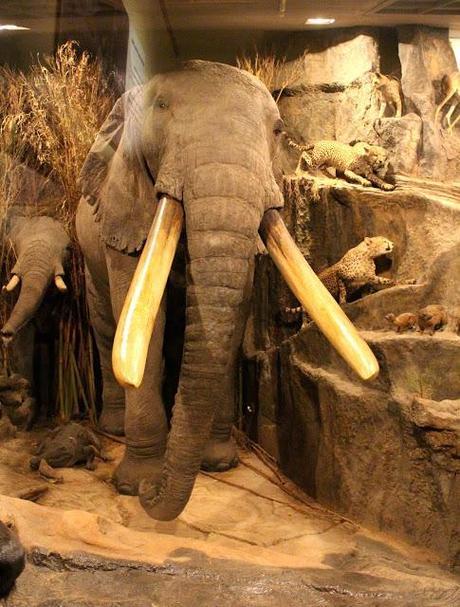
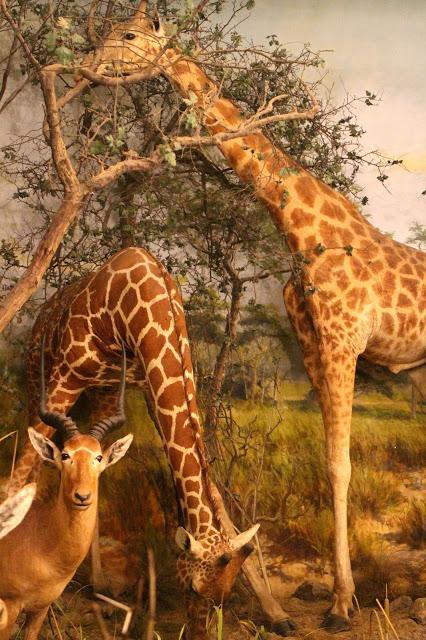
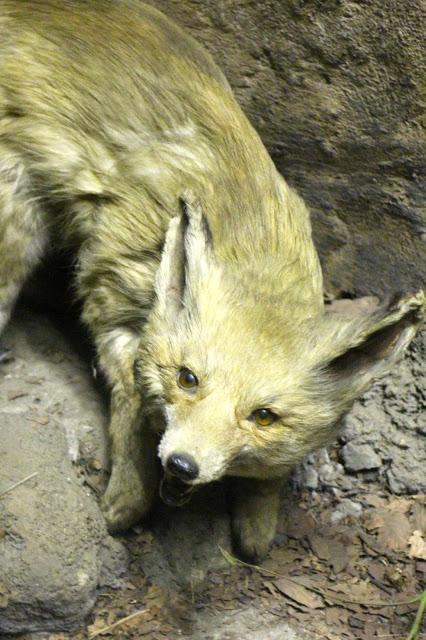 According to the literature we read, this lion is the lion that attacked Major Powell-Cotton one night and nearly killed him. The Major was on his way back to his tent and the lion was blocking his path. He shot the lion, wounding it in the jaw and it went and hid. They followed the lion to his hiding place, thinking it was dead when the lion suddenly ambushed them, attacking the Major. The Major was luckily not too badly injured due to the fact he had a rolled up copy of Punch in his breast pocket which protected him from the majority of the attack. It's a bit like the story of a bullet getting wedged in a book which saves the hero's life.
According to the literature we read, this lion is the lion that attacked Major Powell-Cotton one night and nearly killed him. The Major was on his way back to his tent and the lion was blocking his path. He shot the lion, wounding it in the jaw and it went and hid. They followed the lion to his hiding place, thinking it was dead when the lion suddenly ambushed them, attacking the Major. The Major was luckily not too badly injured due to the fact he had a rolled up copy of Punch in his breast pocket which protected him from the majority of the attack. It's a bit like the story of a bullet getting wedged in a book which saves the hero's life.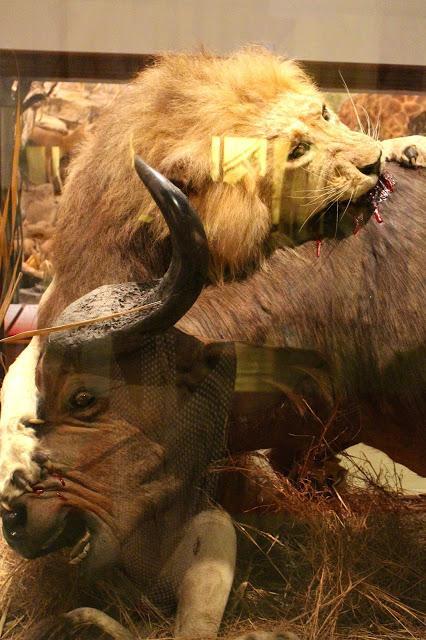 There were hundreds of different breeds of animals on display, all with glassy eyes staring out at you and all fixed in staged poses, including a goat falling down a hillside. It was fascinating to see breeds that I am likely never to see alive as they are either not present in wildlife sanctuaries in the UK or possibly even extinct.
There were hundreds of different breeds of animals on display, all with glassy eyes staring out at you and all fixed in staged poses, including a goat falling down a hillside. It was fascinating to see breeds that I am likely never to see alive as they are either not present in wildlife sanctuaries in the UK or possibly even extinct. 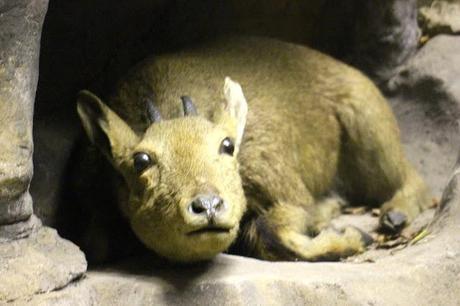 It still felt rather like walking around a giant tomb though.
It still felt rather like walking around a giant tomb though.I was especially disturbed by the room full of elephant tusks. These were all replicas as the real tusks are too valuable to have on display but you are still well aware that they belonged to real animals before we went barreling in with our gung-ho attitude and trigger fingers. The place reeks of British Empirelism.
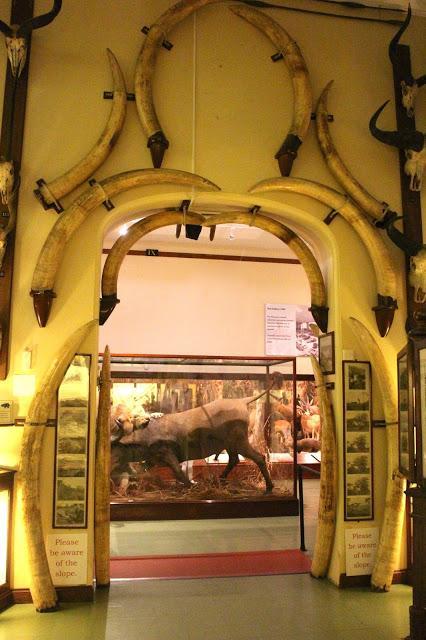
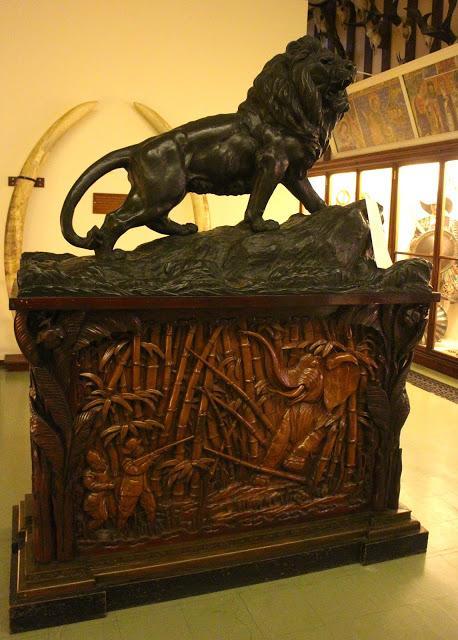
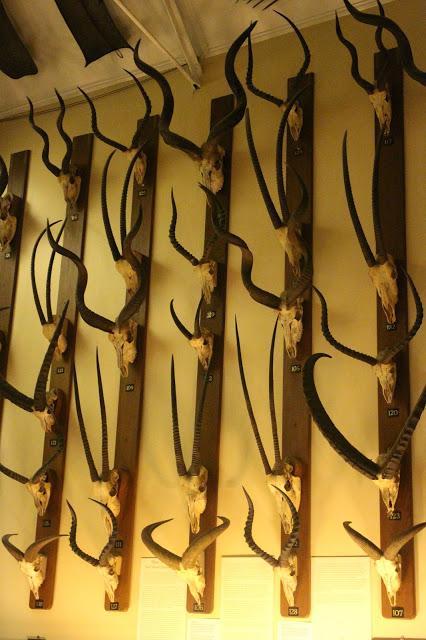 What I did find absolutely fascinating though are the artifacts bought back from various African and Asian cultures and tribes as well as safari (and hunt) gear like this old gunpowder bottle.
What I did find absolutely fascinating though are the artifacts bought back from various African and Asian cultures and tribes as well as safari (and hunt) gear like this old gunpowder bottle.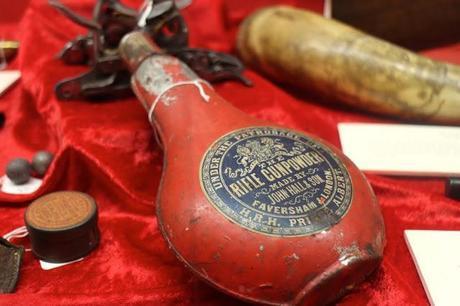 The ethnographic collection is particularly mesmerizing. The Powell-Cotton family recognised the importance of preserving cultures that were rapidly disappearing with the rise of colonialism and the museum is filled with hundreds of cultural objects.
The ethnographic collection is particularly mesmerizing. The Powell-Cotton family recognised the importance of preserving cultures that were rapidly disappearing with the rise of colonialism and the museum is filled with hundreds of cultural objects.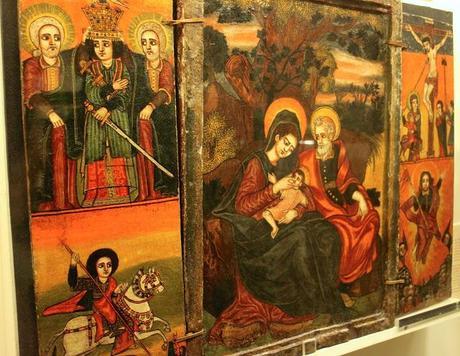
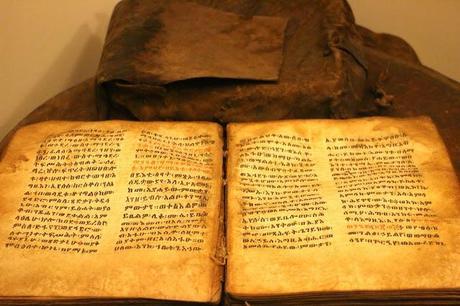

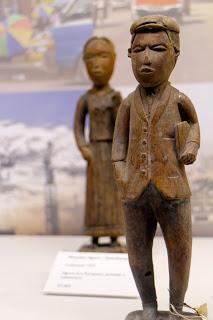
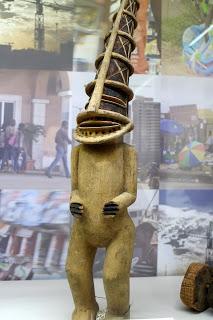
 There are displays of weaponry from all over the world, from guns and spears to daggers and swords, including, to my delight, these ceremonial swords from Burma. I have never seen weapons from that part of the world before and due to the fact that my grandmother is Burmese I have always been fascinated with that side of my heritage.
There are displays of weaponry from all over the world, from guns and spears to daggers and swords, including, to my delight, these ceremonial swords from Burma. I have never seen weapons from that part of the world before and due to the fact that my grandmother is Burmese I have always been fascinated with that side of my heritage.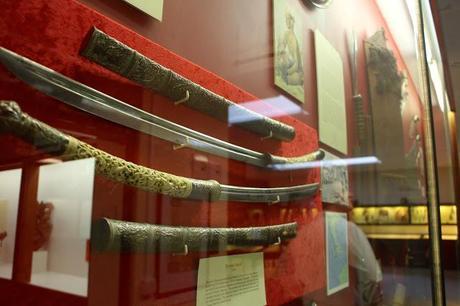 There was an entire display of masks from far flung places. Some are ceremonial like these two below (the one on the right has never been identified so if you know anything about cultural masks that would help the museum better understand its function please get in touch with them).
There was an entire display of masks from far flung places. Some are ceremonial like these two below (the one on the right has never been identified so if you know anything about cultural masks that would help the museum better understand its function please get in touch with them).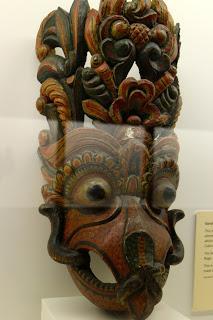
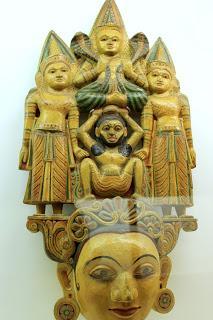 Others had a more day-to-day practical purpose like these ones. Here you have hats and masks made from a lion's skin and a cheetah's skin. There was also one made from a baboon in one of the other cabinets.
Others had a more day-to-day practical purpose like these ones. Here you have hats and masks made from a lion's skin and a cheetah's skin. There was also one made from a baboon in one of the other cabinets.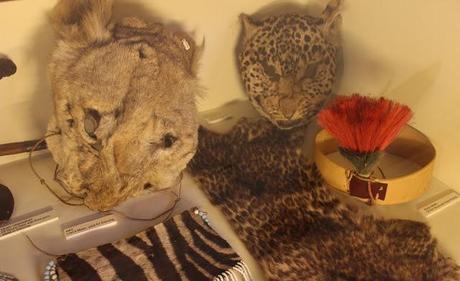 You could look at a traditional village layout, including the fact that the wives all had their own enclosures. I counted at least three enclosures, one for the husband and two for wives!
You could look at a traditional village layout, including the fact that the wives all had their own enclosures. I counted at least three enclosures, one for the husband and two for wives!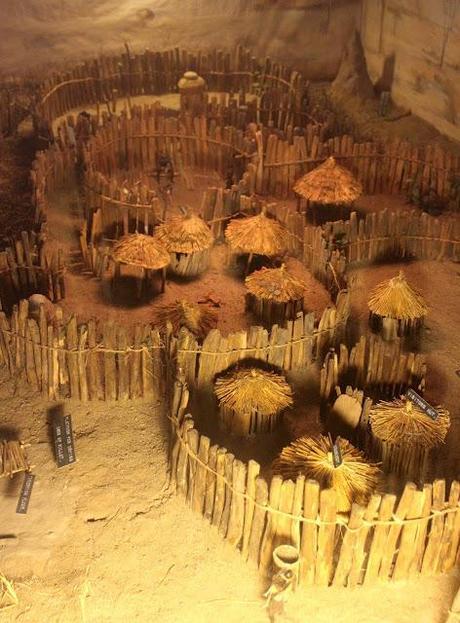
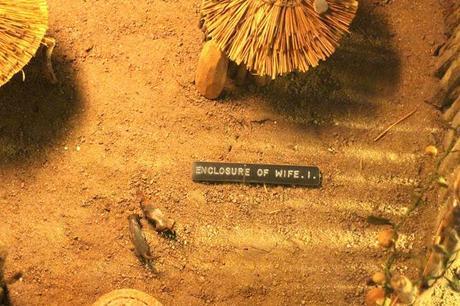 I have modern day versions of these fertility dolls at home that my friend gave me as a wedding present from Tanzania.
I have modern day versions of these fertility dolls at home that my friend gave me as a wedding present from Tanzania.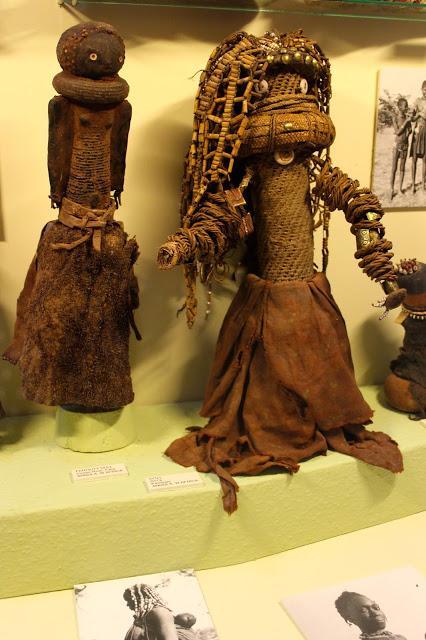 These costumes were Steve's favorite. They are traditional costumes for the month long rite of passage young boys undertake when they are deemed ready to pass into manhood by their fathers (anything from 6 to 13). The costumes are stored in a special hut in the village that the women are not allowed to go near and are passed through the family via brothers. If a man dies and has no one to pass his onto it is buried with him.
These costumes were Steve's favorite. They are traditional costumes for the month long rite of passage young boys undertake when they are deemed ready to pass into manhood by their fathers (anything from 6 to 13). The costumes are stored in a special hut in the village that the women are not allowed to go near and are passed through the family via brothers. If a man dies and has no one to pass his onto it is buried with him. 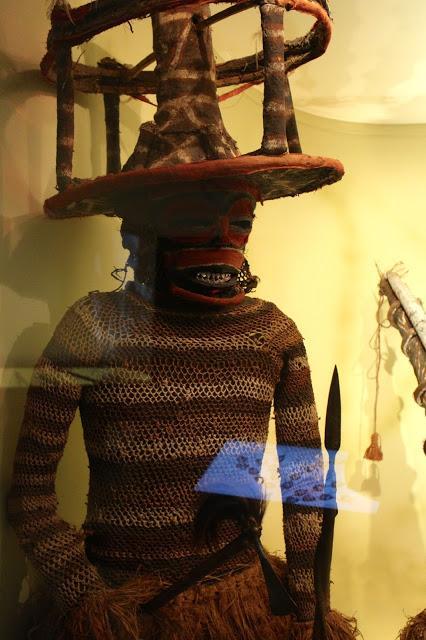
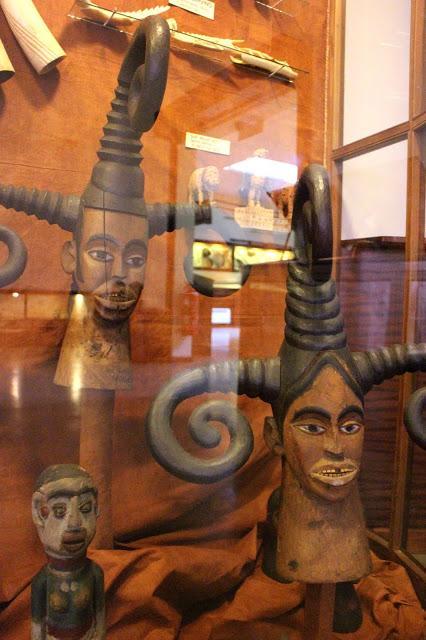 There is also a section on the nautical history of the family including replicas of the boats used and a wonderful ships bell.
There is also a section on the nautical history of the family including replicas of the boats used and a wonderful ships bell.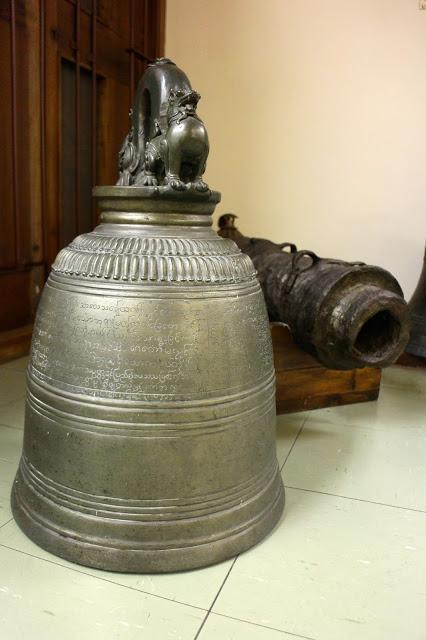
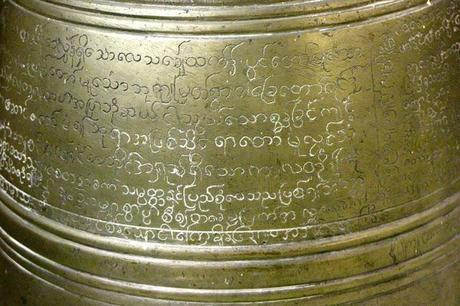 There was so much to read and observe in this museum. It is a working research center and contains a mind-boggling number of treasures. You could lose a good few days in here and still not read it all.
There was so much to read and observe in this museum. It is a working research center and contains a mind-boggling number of treasures. You could lose a good few days in here and still not read it all.The children I saw were fascinated. The museum provides them with explorer hats and treasure maps and they loved finding specific items. It seems like a great way to keep the kids entertained for a day!
I'll leave you there for now, with this teaser, just about to step into the family home and explore the house and gardens.

